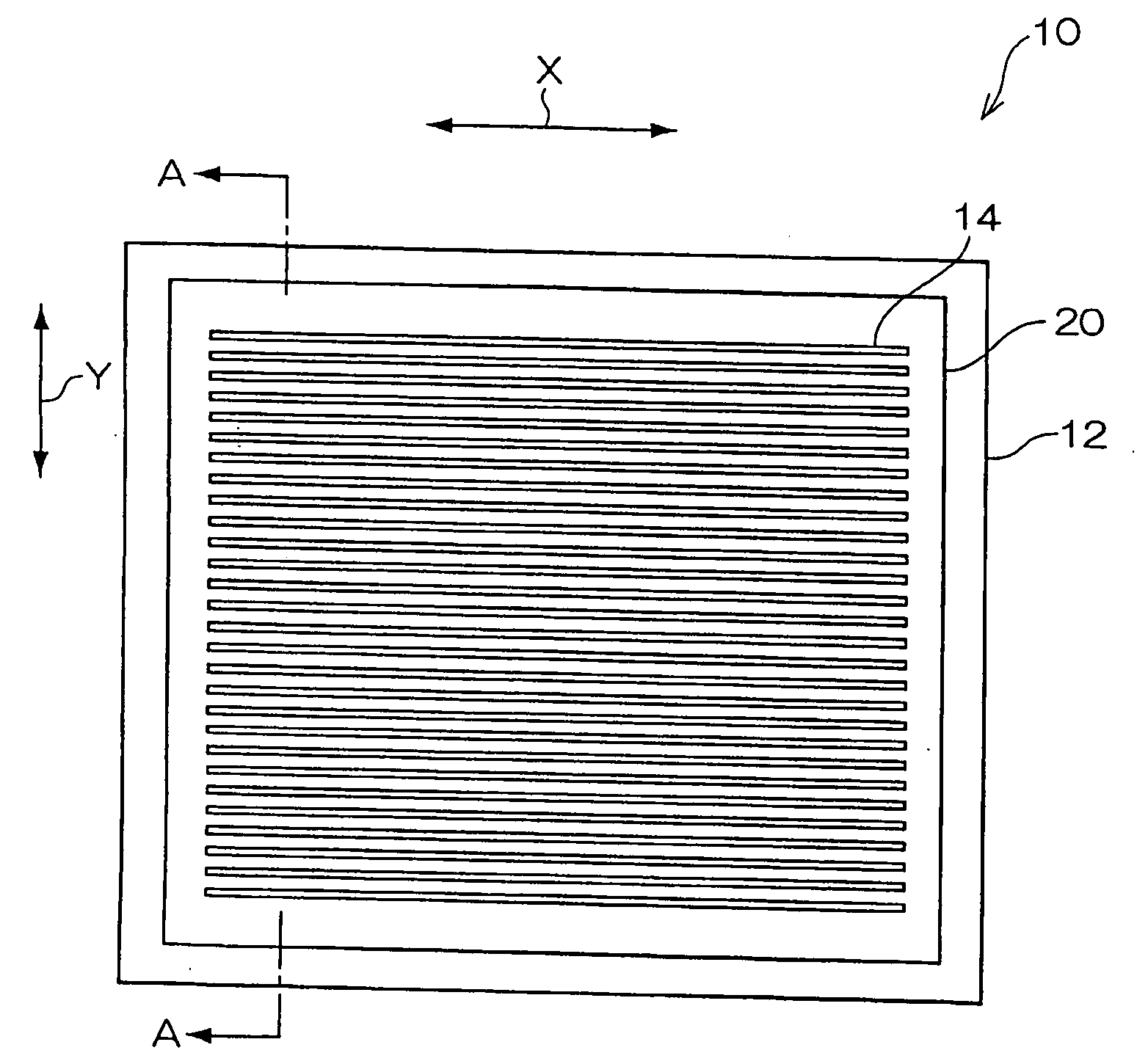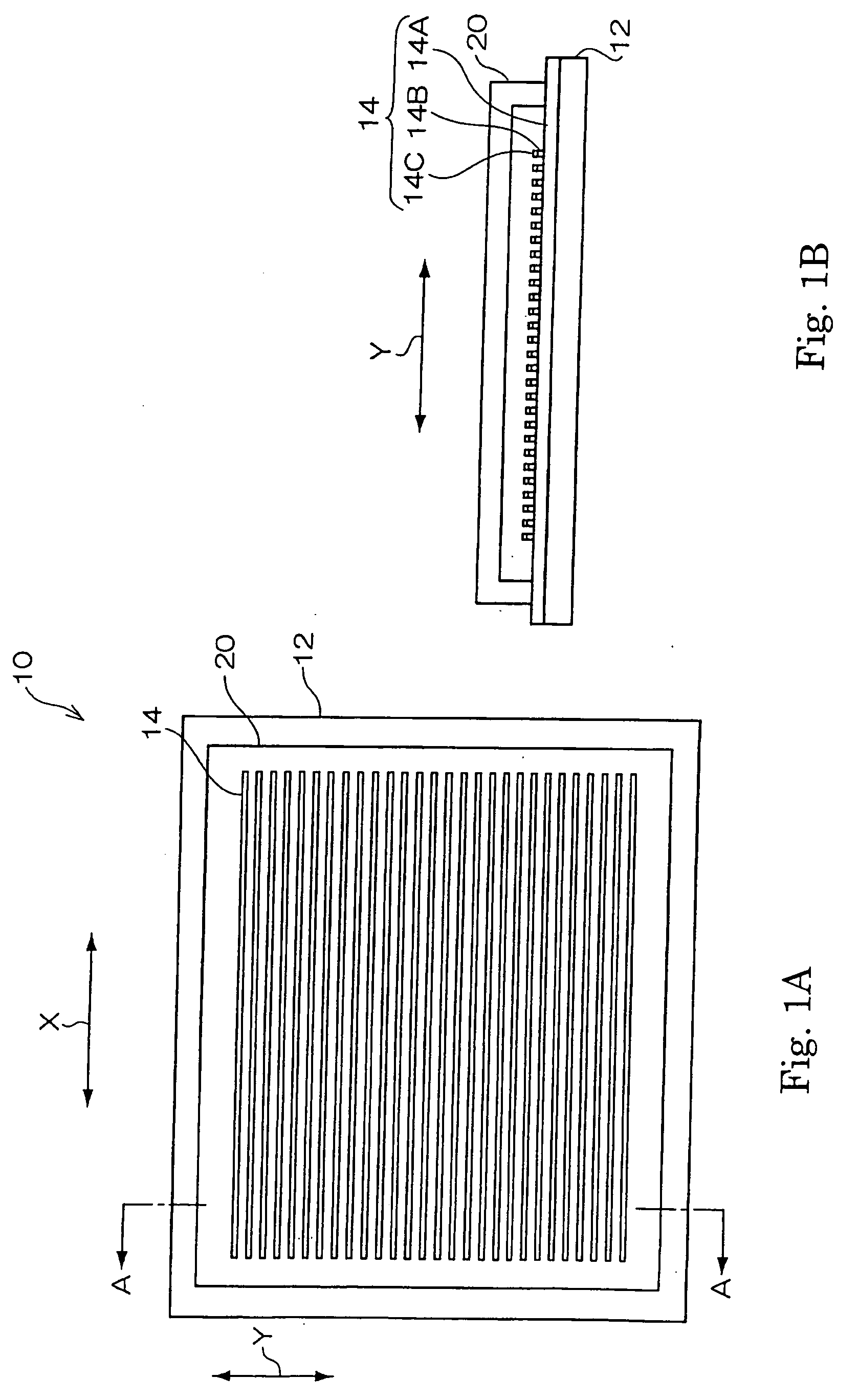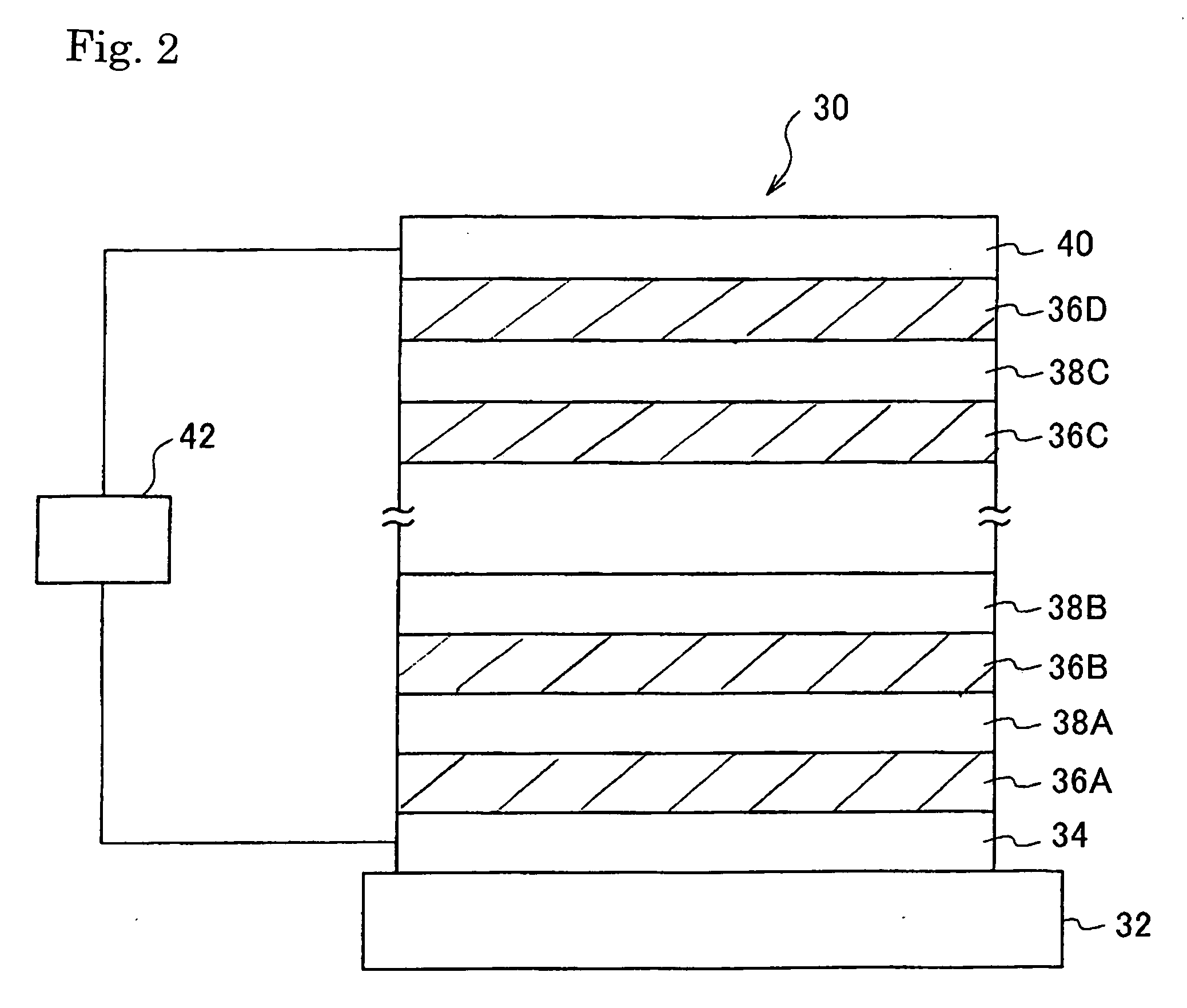Light source, exposure apparatus, image display unit and medical device
- Summary
- Abstract
- Description
- Claims
- Application Information
AI Technical Summary
Benefits of technology
Problems solved by technology
Method used
Image
Examples
example 1
[0094] A light source of Example 1 is manufactured as follows.
(Structure of Light Source)
[0095] Size of a linear pixel: 40 cm×50 μm (aspect ratio: 8,000), the number of pixel: 4,000, Pitch: 100 μm, Light emission area: 40 cm×40 cm, Structure of a linear pixel (an organic EL device): ITO / CuPc / NPD / mCP-Firpic (95:5, a mass ratio), a film thickness: 0.1 μm) / Balq / Alq / LiF / Al (a film thickness: 0.4 μm)
(Manufacturing Method)
[0096] On an ITO substrate(a soda glass) of 440×440×0.7 mm, 4001 pieces of dividing walls having a size of 40 cm×50 μm were formed at a pitch of 100 μm. In a pixel area between the diving walls on the substrate, CuPC (10 nm), NPD (30 nm), mCP (95 mass %), Firpic (5 mass %) (100 nm), Balq (10 nm), Alq (40 nm), LiF (0.5 nm), and Al (400 nm) were sequentially deposited according to a resistance heat deposition method. After connecting a lead to a negative electrode of each pixel, the pixel area was sealed by a sealing member having a drying agent.
[0097] Hereinafter, ...
example 2
[0098] Except that the negative electrode of the organic EL device composing the linear pixel was changed into Al (film thickness: 1 μm) in Example 1, a light source of Example 2 was manufactured in the same manner as Example 1.
example 3
[0099] Except that the negative electrode of the organic EL device composing the linear pixel was changed into Al (film thickness: 2 μm) in Example 1, a light source of Example 3 was manufactured in the same manner as Example 1.
PUM
 Login to View More
Login to View More Abstract
Description
Claims
Application Information
 Login to View More
Login to View More - R&D
- Intellectual Property
- Life Sciences
- Materials
- Tech Scout
- Unparalleled Data Quality
- Higher Quality Content
- 60% Fewer Hallucinations
Browse by: Latest US Patents, China's latest patents, Technical Efficacy Thesaurus, Application Domain, Technology Topic, Popular Technical Reports.
© 2025 PatSnap. All rights reserved.Legal|Privacy policy|Modern Slavery Act Transparency Statement|Sitemap|About US| Contact US: help@patsnap.com



